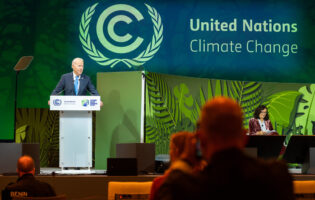Scouting the Land for Opportunities: Issues and Challenges in Refugee Workforce Integration in Germany and the United States

Yixiang Xu
China Fellow; Program Officer, Geoeconomics
Yixiang Xu is the China Fellow and Program Officer, Geoeconomics at AGI, leading the Institute’s work on U.S. and German relations with China. He has written extensively on Sino-EU and Sino-German relations, transatlantic cooperation on China policy, Sino-U.S. great power competition, China's Belt-and-Road Initiative and its implications for Germany and the U.S., Chinese engagement in Central and Eastern Europe, foreign investment screening, EU and U.S. strategies for global infrastructure investment, 5G supply chain and infrastructure security, and the future of Artificial Intelligence. His written contributions have been published by institutes including The Chinese Academy of Social Sciences, The United States Institute of Peace, and The Asia Society's Center for U.S.-China Relations. He has spoken on China's role in transatlantic relations at various seminars and international conferences in China, Germany, and the U.S.
Mr. Xu received his MA in International Political Economy from The Josef Korbel School of International Studies at The University of Denver and his BA in Linguistics and Classics from The University of Pittsburgh. He is an alumnus of the Bucerius Summer School on Global Governance, the Global Bridges European-American Young Leaders Conference, and the Brussels Forum's Young Professionals Summit. Mr. Xu also studied in China, Germany, Israel, Italy, and the UK and speaks Mandarin Chinese, German, and Russian.
__
March 13 saw strong voter support in three German state elections for the anti-immigration Alternative for Germany (AfD) Party. Fueled by continuing waves of incoming refugees, anxiety is building in a country that just a decade ago started to see immigration as an opportunity. Together with its European neighbors, Germany is now facing tremendous pressure to provide for the refugees and integrate them into the local labor market.
Across the Atlantic, the United States is built on immigration. Not only is the country admitting hundreds of thousands of new immigrants every year, the U.S. government also runs the oldest and largest refugee resettlement program in the world. The U.S. was born out of the work and entrepreneurship of generations of immigrants from all corners of the world. Yet, immigration and refugee issues are increasingly topics of fierce political debates.
As the number of refugees continues to increase globally, countries like the United States and Germany, where there are safe refuge and economic opportunities, are confronted with the difficult task of integrating refugee populations into local labor forces. Germany’s systematic integration efforts and the U.S.’ culture of self-integration are both contributing to the integration efforts in their respective jurisdictions. However, issues such as the income gap, education deficit, and social cleavages remain long-term challenges.
Different Experiences, Similar Obstacles
Having admitted over 1.1 million refugees last year, local and state governments in Germany are stretching their resources. The need for refugees to become self-sufficient is greater than ever. Not only are asylum-seekers initially barred from seeking work, but their job prospects are also dependent on factors including their long-term legal status in the country, recognition of their skills and training, and their knowledge of German. Facing the challenge of putting refugees to work, all levels of government in Germany, together with civil society partners, have come up with a range of programs and initiatives to systematically facilitate training and employment for refugees with strong prospects of staying in the country. Extensive integration courses and German language instructions are already available for asylum-seekers from certain countries, including Syria.[1]
In the United States, a long-standing culture of self-integration and a lack of government support for integration assistance means individuals are expected to join the workforce as soon as possible. The urgency to provide for themselves in lieu of adequate social welfare services is a driving force for refugees to find work in formal and informal sectors of the economy. The U.S. federal government-sponsored refugee resettlement program and its local partners often concentrate their resources on the initial months of refugee arrivals and aim for immediate employment. Charitable and religious groups, as well as established ethnic communities, provide additional sources of information, welfare, and employment opportunities to refugees.
Despite publically funded programs and civil society outreach, a few problems remain in both Germany and the United States.
Limited knowledge of English and German in their respective labor markets may not only slow down integration, but may also lead to lower incomes and higher levels of dependency on social welfare. Recent refugee profiles in both countries show that refugee origins are increasingly diverse and large numbers of incoming refugees have limited or no literacy in their native language—a challenge that would require a lot of resources from governments as well as civil societies.[2]
Unemployment and underemployment are also of particular concern, even for refugees with a long history of residence in their adopted country. Lack of language ability, education, or training have long-term negative impacts on both job and wage prospects for refugees. The rush for immediate employment, especially in the United States, often neglects the need for education, training, and adequate skill matching for individuals, potentially resulting in underemployment and missed opportunities. A lack of facilitation in skill certification and heavy bureaucratic regulations for employment authorization may also drive some refugees into exploitation in informal economic sectors.[3]
Large numbers of children and young adults, who make up a large proportion of the refugee population, often face limited access to formal education, which greatly hinders their job prospects as well as the integration process. In the case of the United States, refugee children could spend years with their families before resettlement, during which time there is often little attempt to offer them English instruction or prepare them to transition into the U.S. education system once they arrive.[4] In Germany, schools are scrambling to absorb hundreds of thousands of school-aged refugee children, who require both extensive instruction in German language and counseling to deal with the emotional stress and trauma of what they have endured. Schools are also faced with the challenge of keeping refugee students in the classroom amid anxiety over legal status and, in some cases, cultural prejudices.[5]
Questions Remain
Aside from the different approaches and common issues on the topic of refugee labor force integration across the Atlantic, some fundamental questions remain. Although governments are responsible for refugee settlement and facilitating integration, entry to the labor force is largely based on demands and initiatives from the private sector.
The emphasis on a transition to a digital economy in many industrialized countries, such as the German government’s “Industrie 4.0” agenda, is increasingly demanding employees with higher levels of skill sets in technology, especially in information technology, a profile many refugees lack and whose training requires substantial investment and a lengthy process. In Germany, where small and mid-sized companies comprise the backbone of the economy, such hefty up-front investments in employees could potentially deter businesses from hiring refugee workers. In a Europe-wide labor market, the increased availability of such talents presents another disincentive to corporate systematic training for refugees. As industrial manufacturing transitions into highly digitalized and automated production, the demand for skill sets could shift, resulting in a change in the number of employees needed and the availability of low and medium-skilled jobs. How would governments integrate growing populations of refugees in rapidly transitioning economies?
Integration of refugees into the workforce is part of a larger picture of refugee integration in their host societies. Education and labor force participation differ not only between different refugee communities, but also along the lines of gender and age. While refugees from Russia and Iraq usually have high levels of educational attainment, a great number of refugees from countries such as Eritrea and Syria have had limited qualified education, making their training and job-search especially challenging.[6] (A look at pre-conflict elementary and middle school enrollment rate in Syria seems to reflect high rate of literacy. However, enrollment rates do not address the quality of academic achievement measured against international standards, such as the International Student Achievement in Mathematics.[7]) Lower levels of education, employment, and income in refugee women compared to men also require adequate attention. Furthermore, wage discrepancies between native-born populations and long-term settled refugees both in Germany and the United States, particularly in times of economic downturn such as the 2009-2010 recession, are signs of obstacles for wider social integration.[8] In short, governments and local societies need to have a conversation over the long-term goal of refugee integration. Is refugee self-sufficiency the endpoint, or should we work toward more equal socio-economic participation?
While governments lead the refugee settlement and integration efforts, civil society plays a key role in workforce and social integration. In the United States, established ethnic communities as well as religious and civil organizations provide sources of information, a community-based social safety net, and access to employment. In Germany, as the number of refugees grows, there are increasing efforts of partnership between government and civil society, including aid organizations, service institutions, and private companies. However, as the refugee population continues to grow, especially in Germany, resources and efforts from local communities and civil society are being stretched thin. Both the will and ability to welcome and assist refugees seem to change with changing realities on the ground. In the face of rising demand for safe refuge and economic opportunity, can civil society sustain its engagement in refugee integration with long-term support?
[1]“Mehr als nur Deutschkurse: Christine Loibl von der Volkshochschule Starnberger See stellt Integrations-Angebote in Tutzing vor.” Süddeutsche Zeitung on the Web, 12 April 2016, <http://www.sueddeutsche.de/muenchen/starnberg/bildung-mehr-als-nur-deutschkurse-1.2946621> (18 April 2016)
[2]Daniel C. Martin and James E. Yankay, “Refugees and Asylees: 2013,” Annual Flow Report, August 2014, <https://www.dhs.gov/sites/default/files/publications/ois_rfa_fr_2013.pdf> (18 April 2016)
“Das Bundesamt in Zahlen 2015: Asyl,” Bundesamt für Migration und Flüchtlinge 2016, <http://www.bamf.de/SharedDocs/Anlagen/DE/Publikationen/Broschueren/bundesamt-in-zahlen-2015-asyl.pdf?__blob=publicationFile> (18 April 2016)
[3]Lukas Koschnitzke, “Jung, aber wenig qualifiziert,” Zeit Online, 16 January 2016, <http://www.zeit.de/wirtschaft/2016-01/arbeitsmarkt-fluechtlinge-arbeitslosigkeit-lohndumping-realloehne> (18 April 2016)
[4]Randy Capps, Kathleen Newland, Susan Fratzke, Susanna Groves, Michael Fix, Margie McHugh, and Gregory Auclair, “The Integration Outcomes of U.S. Refugees: Successes and Challenges,” Migration Policy Institute,June 2016, 7-14,<http://www.migrationpolicy.org/research/integration-outcomes-us-refugees-successes-and-challenges> (18 April 2016)
[5]Hanne Shah, “Flüchtlingskinder und jugendliche Flüchtlinge in der Schule,” Baden-Württemberg Ministerium für Kultus, Jugend und Sport, 21 October 2015, 11-12, <http://www.km-bw.de/site/pbs-bw-new/get/documents/KULTUS.Dachmandant/KULTUS/kultusportal-bw/Publikationen%20ab%202015/2015-10-21-Fluechtlingskinder-Screen.pdf> (18 April 2016)
[6]Interview: Jan-Martin Wiarda, “Zwei Drittel können kaum lesen und schreiben,” Zeit online, 3 December 2016, <http://www.zeit.de/2015/47/integration-fluechtlinge-schule-bildung-herausforderung> (18 April 2016)
[7]TIMSS & PIRLS International Study Center, TIMSS 2011 International Results Im Mathematics, Chapter 1, International Student Achievement in Mathematics <http://timssandpirls.bc.edu/timss2011/downloads/T11_IR_M_Chapter1.pdf> (Chestnut Hill, MA: TIMSS & PIRLS International Study Center, 2011) 42-47.
[8]Randy Capps, Kathleen Newland, Susan Fratzke, Susanna Groves, Michael Fix, Margie McHugh, and Gregory Auclair, “The Integration Outcomes of U.S. Refugees: Successes and Challenges,” Migration Policy Institute,June 2016, 7-14,<http://www.migrationpolicy.org/research/integration-outcomes-us-refugees-successes-and-challenges> (18 April 2016)








